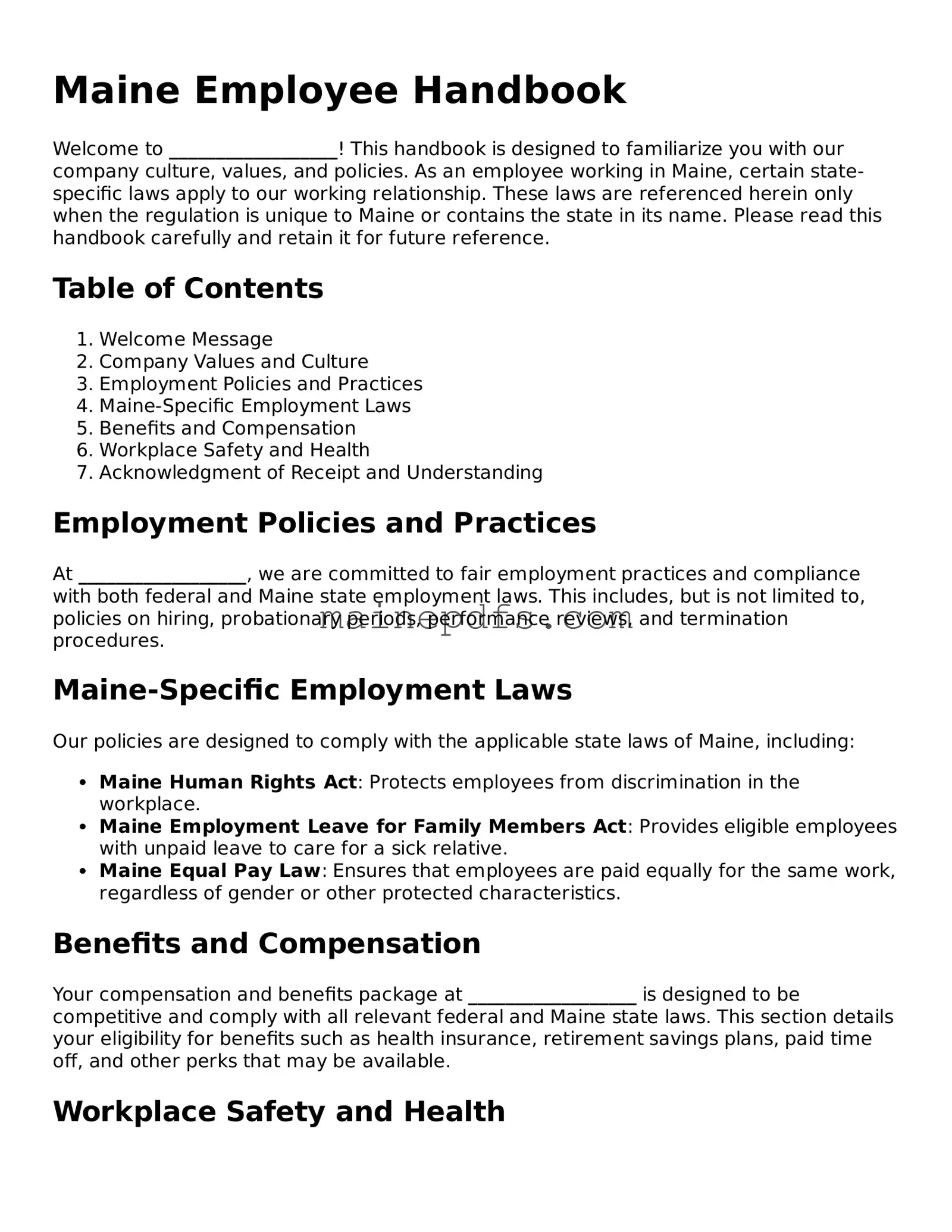Maine Employee Handbook
Welcome to __________________! This handbook is designed to familiarize you with our company culture, values, and policies. As an employee working in Maine, certain state-specific laws apply to our working relationship. These laws are referenced herein only when the regulation is unique to Maine or contains the state in its name. Please read this handbook carefully and retain it for future reference.
Table of Contents
- Welcome Message
- Company Values and Culture
- Employment Policies and Practices
- Maine-Specific Employment Laws
- Benefits and Compensation
- Workplace Safety and Health
- Acknowledgment of Receipt and Understanding
Employment Policies and Practices
At __________________, we are committed to fair employment practices and compliance with both federal and Maine state employment laws. This includes, but is not limited to, policies on hiring, probationary periods, performance reviews, and termination procedures.
Maine-Specific Employment Laws
Our policies are designed to comply with the applicable state laws of Maine, including:
- Maine Human Rights Act: Protects employees from discrimination in the workplace.
- Maine Employment Leave for Family Members Act: Provides eligible employees with unpaid leave to care for a sick relative.
- Maine Equal Pay Law: Ensures that employees are paid equally for the same work, regardless of gender or other protected characteristics.
Benefits and Compensation
Your compensation and benefits package at __________________ is designed to be competitive and comply with all relevant federal and Maine state laws. This section details your eligibility for benefits such as health insurance, retirement savings plans, paid time off, and other perks that may be available.
Workplace Safety and Health
We are dedicated to maintaining a safe and healthy work environment for all employees. This commitment is in compliance with the Maine Workplace Safety and Health Act, along with federal OSHA regulations. You will find our policies on workplace safety, emergency procedures, and health standards detailed in this section.
Acknowledgment of Receipt and Understanding
It is important that you carefully read, understand, and follow the policies outlined in this handbook. By signing the acknowledgment form provided by __________________, you agree that you have received, read, and understood the contents of this Maine Employee Handbook. Additionally, you acknowledge that it is your responsibility to adhere to the policies and guidelines herein and to keep yourself updated on any changes or amendments to this handbook.
Please note: This handbook is not an employment contract but a guide to assist you in understanding your workplace and the policies that govern your employment. The contents of this handbook may be subject to change at the discretion of __________________.
